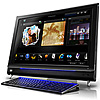 One of the negative consequences of the advances in computing power is the notion that all you need is a computer to be a designer. When pundits, most overly filled with coffee, began promoting the term “desktop publishing” they thought the new technology would push the First Amendment into overdrive. What really happened was the landfills got a major workout and are burgeoning with the fruits of many labors.
One of the negative consequences of the advances in computing power is the notion that all you need is a computer to be a designer. When pundits, most overly filled with coffee, began promoting the term “desktop publishing” they thought the new technology would push the First Amendment into overdrive. What really happened was the landfills got a major workout and are burgeoning with the fruits of many labors.
You have to think of the elements of design as the basic building blocks. These elements will be part of everything you design, from consumer products and furniture to magazine pages and billboards, whether you know it or not. In this blog post, we will explore our thoughts on layouts that are common to print publishing. Understanding these concepts will allow you to create more powerful pages for packaging, ads, magazine and websites. Lines and linework These terms refer to borders, frames and rules. Horizontal or vertical, thick or thin, regular or irregular, they help define and delimit spaces around various elements on your page. Good linework increases both the readability and directionality of the design as a whole Shape Any enclosed area, form or contour in your design is a shape. Shapes in most layouts are square or rectangular, but nothing says they have to be. You can design other shapes, regular or irregular, by using images. Texture Texture imparts a surface feeling and is tactile in printed matter, so choosing the paper stock is a design decision, too. Textures on layouts meant for broadcast or the Internet are visual only, but still key elements. Color Color is probably the element that most designers are a least acutely aware of, if not schooled in; however, color is not required in many designs and some art educators suggest creating designs without color first. The artist should then add only as much color as needed to enhance or complete the design. Experience and experimentation will help every artist develop a good color sense and strategy. Direction Effectively designed layouts usually have a sense of motion. A good design will lead the reader's eyes through the design deliberately, using color changes, shapes, linework and copy placement to direct viewer's attention to what the designer wants them to see. When you have conquered these five elements, there are other considerations such as space, balance, action and excitement. Always remember that less can be more. Open space is often a sign of experience. You do not need to pull every trick out of the bag in order to have a great design. Keep it simple and draw your readers in. Any thoughts?










No comments yet.